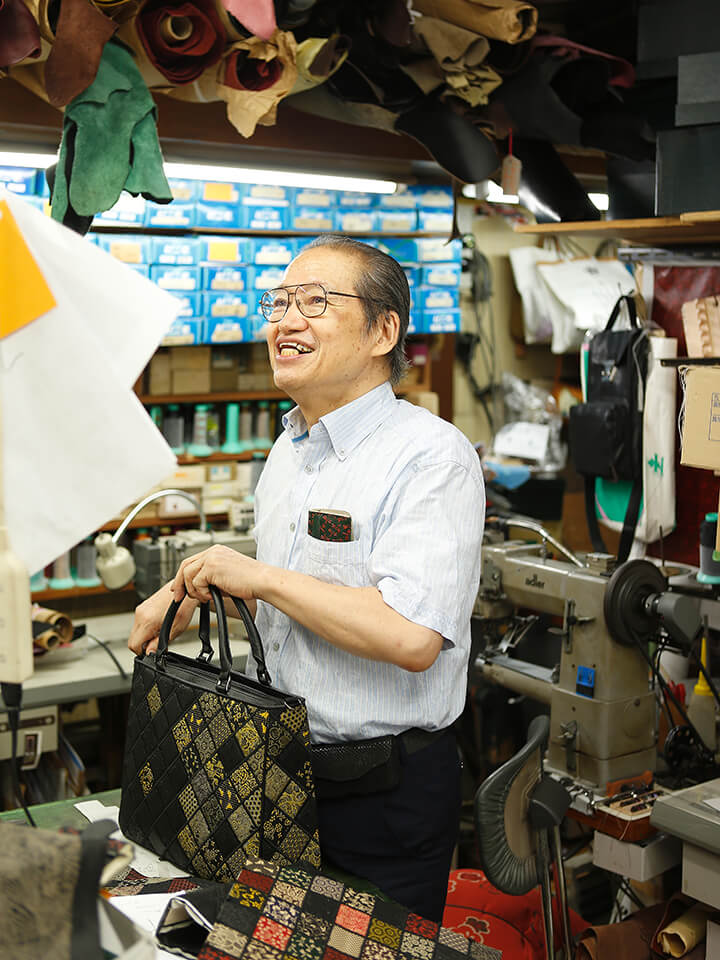
Creative: Sanko
Sanko:A thousand-year old pattern that shines boldly and beautifully

Gourds, dragonflies, waves and rabbits. Looking at these charming patterns, I can't help but think that Japanese people have always liked kawaii, or cute things.
The traditional craft, Inden. This leather product, where patterns are drawn on deer leather with genuine lacquer, has a long history, and an Inden tabi, or traditional Japanese split-toed socks, which is said to be from the Nara period, is stored at the Shosoin repository at Todaiji temple. And in the Edo period, small Inden items were widely used amongst people. It can be said that it is one of the most familiar leather products to Japanese people. Mr. Tsukasa Tada of Sanko is one of the people who was fascinated by Inden. "I used to make handbags from various exotic leathers but one day I came across Inden. I was completely fascinated by the elegant patterns."
Since then, he has been promoting crafts using Inden. But it's not just about tradition. Mr. Tada's style is to express Inden in a way that suits the modern lifestyle. That's why I chose the patchwork method. "Since the size of leather in Inden is limited, most of them are small products, but I thought that if you combine the parts with patchwork, you could make a larger bag."
By applying patchwork, the design became more impactful. It slowly gained popularity, and now there are many repeating customers and custom-made orders. Traditional techniques spread through Mr. Tada's products. "I want to create products that convey the charm of Inden to as many people as possible. After all, old things should be cherished."
The name Inden itself was born in the Edo period, but it is said that this technique of drawing patterns on tanned deerskin with lacquer had been done for a thousand years. It has been used for armor and bags since ancient times. Koshu Inden in Yamanashi Prefecture is the most famous, but it is also produced in Nara and Tokyo. The manufacturing method is unique. The grain surface of deer leather is smoothed and tanned exclusively for Inden, which allows the lacquer to sink in better. By applying lacquer on the paper pattern, it gives the pattern a three-dimensional look. Typical patterns include dragonflies, waves, and rabbits.
